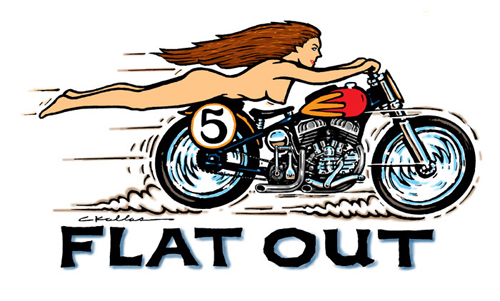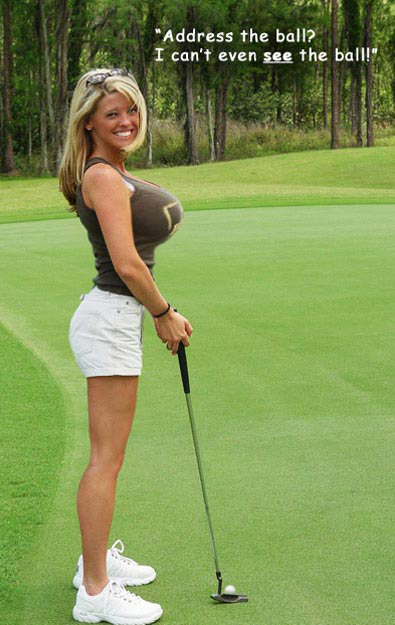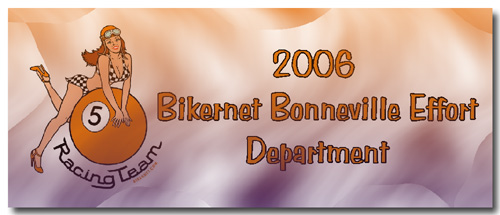

I’m running back and forth between bikes fabricating shit, waiting for parts, dodging bullets and counting the days. Yesterday I received a note from David Zelma at Performance Machine. “We found the front caliper bracket,” he said and I sighed. I was beginning to wonder whether I dove into an odyssey to find the un-findable part.
I can vision that 10-inch front brake rotor bracket. I could swear I owned one at one time. Here’s the number, PN 1208-0017. It was designed for their standard 4- piston calipers to mount on XL-FX 1978 through 1983 with 10-inch disc brake rotors. The 10-inch number is the critical bastard. I have a handful of the ’84 and up jobs for larger rotors. If you have one of the 10-inch brackets, frame it and mount it on a wall.

So we shifted to the rear bracket. We had the coolest PM 8-inch floating rotor without holes in the aluminum center. Jay took it home and carefully measured the center of the lip, figured out five even positions and drilled them.

The PM based rear wheel hub needed to be drilled, for the rotor and that was going to be a trick. We didn’t have a drill press base large enough to reach the hub but we did have a large chunk of 6-inch steel tubing and center punches to mark the holes.

We marked, punched and drilled the holes with guide holes first. We taped the drill bit to give us the proper depth without drilling through the hub. Then we drilled the holes the proper diameter to tap them with 5/16 coarse threads.

With the rotor drilled and fitted, we dug around for a bunch of domed Allens to fasten the rotor to the hub.
The bolt heads needed to be shallow enough to miss the caliper bracket and stainless domed heads did the job. The other consideration is strength. According to Derek from DMP Enterprises, our fastener connection, (818) 775-9804, we should not use stainless fasteners on rotors. “You need grade 8 fasteners,” Derek said.

Okay, but this is a much lighter, less powerful bike. Next move, a wheel spacer between the two Timken bearings in the hub and Jay brought over the seamless tubing necessary, and we did our damnest to make a measurement. Then he took the data to the lathe and cut the tubing square to make sure the bearings ran true to the races in the hub.

After several precision cuts, Jay cut the bearing slightly short and we used a couple of shims to make it good with a clearance of .010-inch. Then I greased the bearings thoroughly and slathered grease on the races. With the spacer/shims in place we installed the bearings and seals. The wheel was ready to rock. We needed to grapple with the small rear PM two-piston caliper and mounting bracket.

This is a tricky Performance machine setup. It works with several sized rotors for axle spacing. It also allowed us to run the anchor bracket out either side of the caliper. It bolts into the middle of the caliper halves. First, we determined where to drill the ¾-inch axle hole by the PM gauge stamped into the caliper bracket. We drilled a guide hole then the major ¾-inch puppy.

Here’s the deal. The bracket fit right onto the axle, then we had to take the caliper apart and install the anchor-rod bracket. As you can see, in the top of the shot below, the bracket is sticking north. It can also be installed aiming south, or east and west, depending on how you’re holding the caliper. I musta split that caliper a half-dozen times during this process.


It was a trip figuring out all these components and how they fit together. You get the results of all our puzzle work. Okay, so once we put all the pieces together properly and wrapped the caliper over the rotor, centering the pads with the proper wheel spacer, we installed the wheel.



Our first custom notion was to mount the caliper Softail style so the caliper rested between the frame rails. We actually manufactured a brake anchor bracket and machined it to fit perfectly. Then we discovered that the wheel was seriously off center and we’d misplaced the sprocket spacing. We had to regroup.

We returned to the bike and dropped the axle caliper bracket straight down to allow the bracket to act as one of the wheel spacers and be pressed against the frame axle plate. There was a catch, a lump in the frame that didn’t allow the plate to set flat.

Bikernet.com does not have a CNC machine, but a BJ&M (Bandit, Jay and Masa) machine. This is truly state-of- the-art machining. Jay controlled one cutting direction, I controlled the other and Masa sprayed the cutting fluid for perfect accuracy and efficiency.

Note the cutting fluid being precision fed into the Bikernet Machine Shop operation.

We notched the bracket then discovered that our notch was on the wrong side. No worries, as the Aussie’s say, we flipped it and notched again.

During this operation a highly trained guard cat watched the shop door while positioned in the fairing we planned to modify for the 45 flathead, Sportster front end, since we my run this puppy in the partially streamlined class.

We’re missing some shots of the heim joint anchor rod we built and fastened to the frame through an Epson scanner glitch, but we’re working on it. We may retrieve them yet. In the meantime our frame is out to powder at Foremost in Gardenia.
But the shop isn’t on vacation. We’re cleaning the shop, rearranging equipment and refurbishing some new-to-us equipment in preparations to build these two bikes fast, once the powder is back.

We captured two old Delta wood working machines and transformed them into metal shop hands. One is a belt sander and the other a band saw. We needed both. We cleaned and grease ‘em, then try to make ‘em work. My problem was finding the right blades for the band saw in the correct length.
John Reed, the V-Bike designer for Custom Chrome, came to my aid.
You can get a blade welder. You buy a bulk length of blade cut it to length, put it in the welder and it joins each end. Then you have to heat the weld red, and let it cool, to anneal it. Rutland tools sell lengths of Starett band saw blades in specific lengths.

Come to a crunch, you can get your saw blade the right length, grind each end so it chamfers to a razor edge about ¼-inch in on each end of the blade.Put some silver solder flux and warm it with a gentle negative acetyline/oxy flame until it melts, (just under red) and touch it with just enough silver solder to let itcapillary across the surface, hold each end together with some flux, heat it, and it will join, and grind the side so its the same thickness all over.

We tried the welder and it didn’t work so we decided the man with the torch could weld it, and I did, very carefully. Then ground it and we have a working bandsaw, I hope.
Next, I’ll bring you the exhaust pipe fab on the V-Bike 120-inch Panhead, followed by the assembly process on both bikes. We’re burnin’ daylight and Whiplash reminds me of the Sturgis deadline on a weekly basis.



